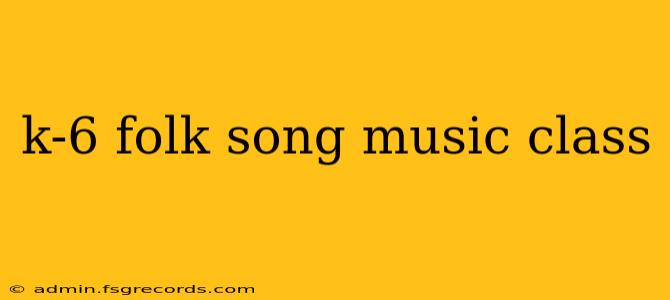Teaching folk songs in a K-6 music class offers a unique opportunity to connect students with cultural heritage, develop musical skills, and foster a love for music. This guide provides educators with a structured approach to incorporating folk songs into their curriculum, covering lesson planning, activity ideas, and assessment strategies.
Choosing Appropriate Folk Songs
Selecting age-appropriate folk songs is crucial for engagement and comprehension. Consider these factors:
- Simplicity: K-2 students benefit from songs with repetitive lyrics, simple melodies, and easily learned rhythms. Examples include "Twinkle Twinkle Little Star," "Mary Had a Little Lamb," and simple rounds like "Row, Row, Row Your Boat."
- Thematic Relevance: Align song choices with curriculum themes. For example, songs about nature can accompany science units, while historical folk songs can complement social studies lessons.
- Cultural Diversity: Expose students to a variety of folk traditions from different cultures and regions. This promotes cultural awareness and understanding. Consider songs from various countries, ethnic groups, or historical periods.
- Student Interest: Gauge student preferences through surveys or informal discussions to increase engagement.
Resources for Finding Folk Songs:
- Public Libraries: Often have extensive collections of children's folk song books and recordings.
- Online Databases: Websites and streaming services offer curated collections of folk songs suitable for educational use. (Note: Always verify licensing before using online resources in your classroom.)
- Traditional Music Collections: Explore local or regional archives for authentic folk songs from your area's history.
Lesson Planning and Activities
A well-structured lesson plan ensures effective learning. Here's a sample framework:
1. Introduction (5-10 minutes): Begin with a brief discussion of the song's origin, cultural context, and any relevant historical information. Use visuals like maps or pictures to enhance understanding.
2. Listening Activity (5-10 minutes): Play the song for the students, encouraging them to listen attentively to the melody, rhythm, and lyrics.
3. Movement and Singing (15-20 minutes): Incorporate movement activities such as actions, dances, or simple instruments to enhance engagement and understanding of the song's rhythm and structure.
4. Instrumental Exploration (10-15 minutes): Introduce simple instruments like rhythm sticks, shakers, or classroom percussion instruments to accompany the singing. This helps develop rhythmic awareness and coordination.
5. Song Analysis and Creativity (10-15 minutes): Encourage students to analyze the song's structure, identify repetitive phrases, and explore different ways to sing or play the song. This could involve improvisation or creative variations.
6. Assessment and Reflection (5 minutes): Assess student understanding through informal observation, participation, and short discussions about the song and its impact.
Activity Ideas for Different Grade Levels:
- K-2: Focus on simple songs, repetitive actions, and basic rhythmic activities.
- 3-4: Introduce more complex songs, harmonies, and basic musical notation. Begin exploring the history and cultural context of the songs.
- 5-6: Engage students in more in-depth analysis of song structure, melody, and harmony. Encourage creative interpretations and arrangements. Students could even research and present on their chosen folk song.
Assessment Strategies
Assessment should be both formative and summative:
- Formative Assessment: Observe student participation during class activities, listen to their singing, and provide constructive feedback.
- Summative Assessment: Students could perform the learned songs individually or in groups, demonstrating their understanding of the lyrics, melody, and rhythm. A simple written reflection on the song's meaning and impact can also be a valuable assessment tool.
Conclusion
Integrating folk songs into your K-6 music curriculum offers a rich and engaging learning experience. By carefully selecting songs, planning effective lessons, and employing varied assessment strategies, you can help students develop musical skills, appreciate cultural diversity, and foster a lifelong love for music. Remember to adapt your approach to the specific needs and abilities of your students, fostering a positive and inclusive learning environment.

